The exhibition on Rubens, staged until a few days ago in the Royal Palace in Genoa, presented among some previously unpublished works a painting depicting St. Sebastian being cared for by angels, belonging to a private collection, but for some years exhibited on loan to the Rubenshuis in Antwerp, only dubiously attributed to “Rubens and workshop.”
The work, which was presented as an autograph replica, with some variations, of the specimen belonging to the Corsini Gallery in Rome, had already participated in the exhibition Becoming famous. Peter Paul Rubens, held in Stuttgart in 2021-2022, where it was only dubiously attributed to the painter by Büttner himself. In the record compiled by Anna Orlando, there is no mention of the previously expressed doubts about the painting’s alleged authorship, presented directly on this occasion as an original work by Rubens, without the need for any critical explanation.
Unlike the Palazzo Corsini version, whose attribution to the master is now universally accepted, but which was already the subject of alternating doubts as to its placement in the course of its activity, the new version on display in the exhibition was unhesitatingly referred to 1615 and identified with a Saint Sebastian cured by angels, mentioned with compatible measurements in a 1722 inventory relating to the collection of Carlo Filippo Antonio Spinola Colonna, which induced the author of the card to consider its original commissioner to be the ancestor Ambrogio Spinola or his son Filippo. However, the issue is very complex to be dismissed with a few words and must also be addressed by considering the work in relation to other existing versions.
The Palazzo Corsini exemplar, which has the manifestly later addition of two little angels, has been resolved by Michael Jaffé with the reference around 1608-1610 (Jaffé, Rubens 1989, p. 162, no. 75), while a similar version from a private collection, containing the variant of the white drape covering part of the saint’s nudity, turned behind his bust and raised above his shoulders by one of the two little angels on the right, is rubricated as a seventeenth-century copy. Hans Vlieghe (1973; Corpus Rubenianum, Saints, vol II, no. 144; pp. 147-148), noting how a large drawing belonging to the Louvre, depicting the Baptism of Christ, now preserved by the Musée des Beaux Arts in Antwerp, executed by Rubens for one of the three canvases he prepared in 1604, on commission from Vincenzo Gonzaga, for the main chapel of the church of the SS. Trinità in Mantua, depicted in the center of the composition a naked young man leaning against a tree, who was later excluded from the large group of figures shown in the large painting for the church. The exclusion of this single figure seems to find its reason in seeing it used instead, almost twin, in the Saint Sebastian being cared for by angels in the National Gallery of Palazzo Corsini in Rome, from which Hans Vlieghe appropriately deduced the execution of the work at a time between the design drawing and its final transposition on canvas, thus around 1601-1603.
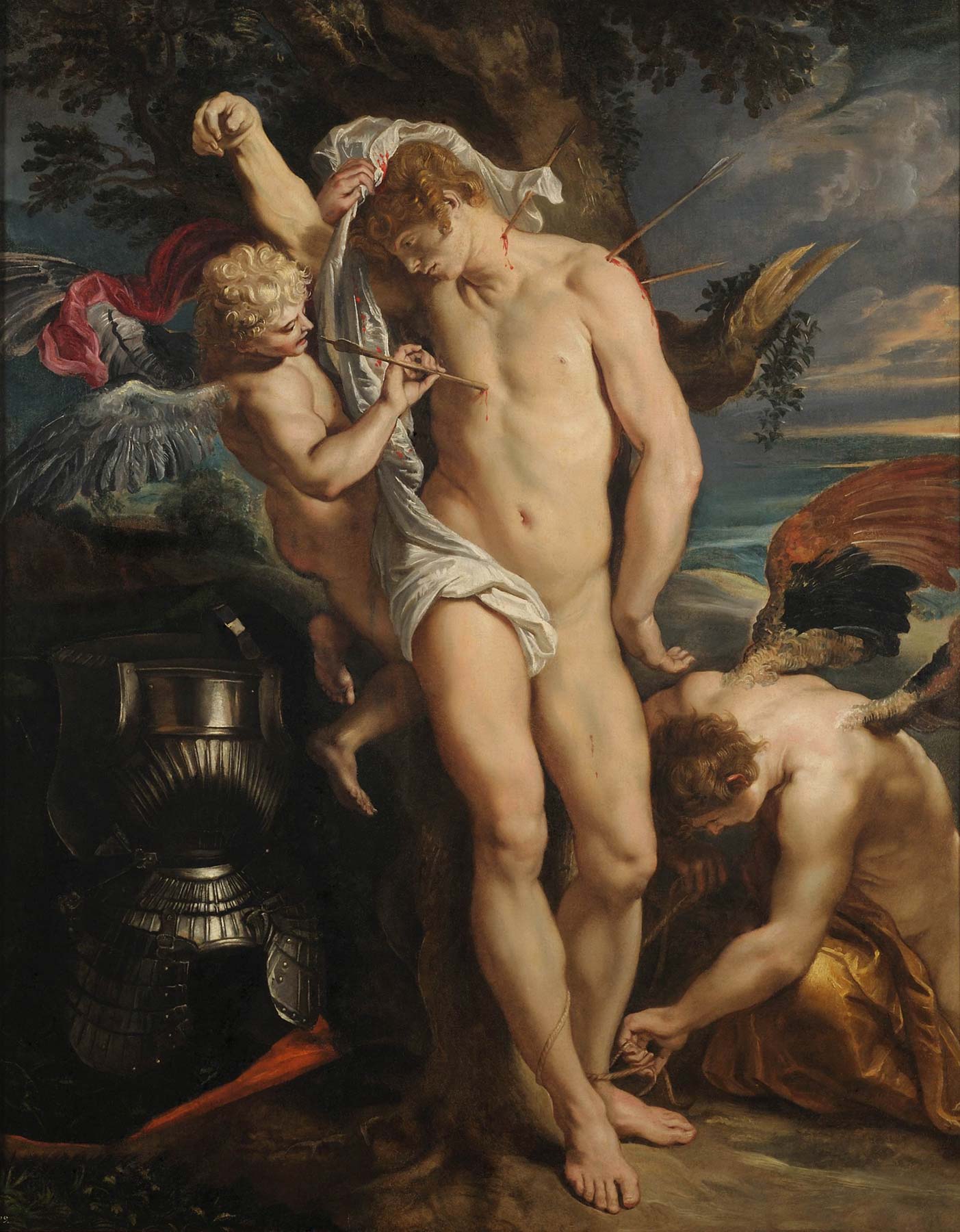
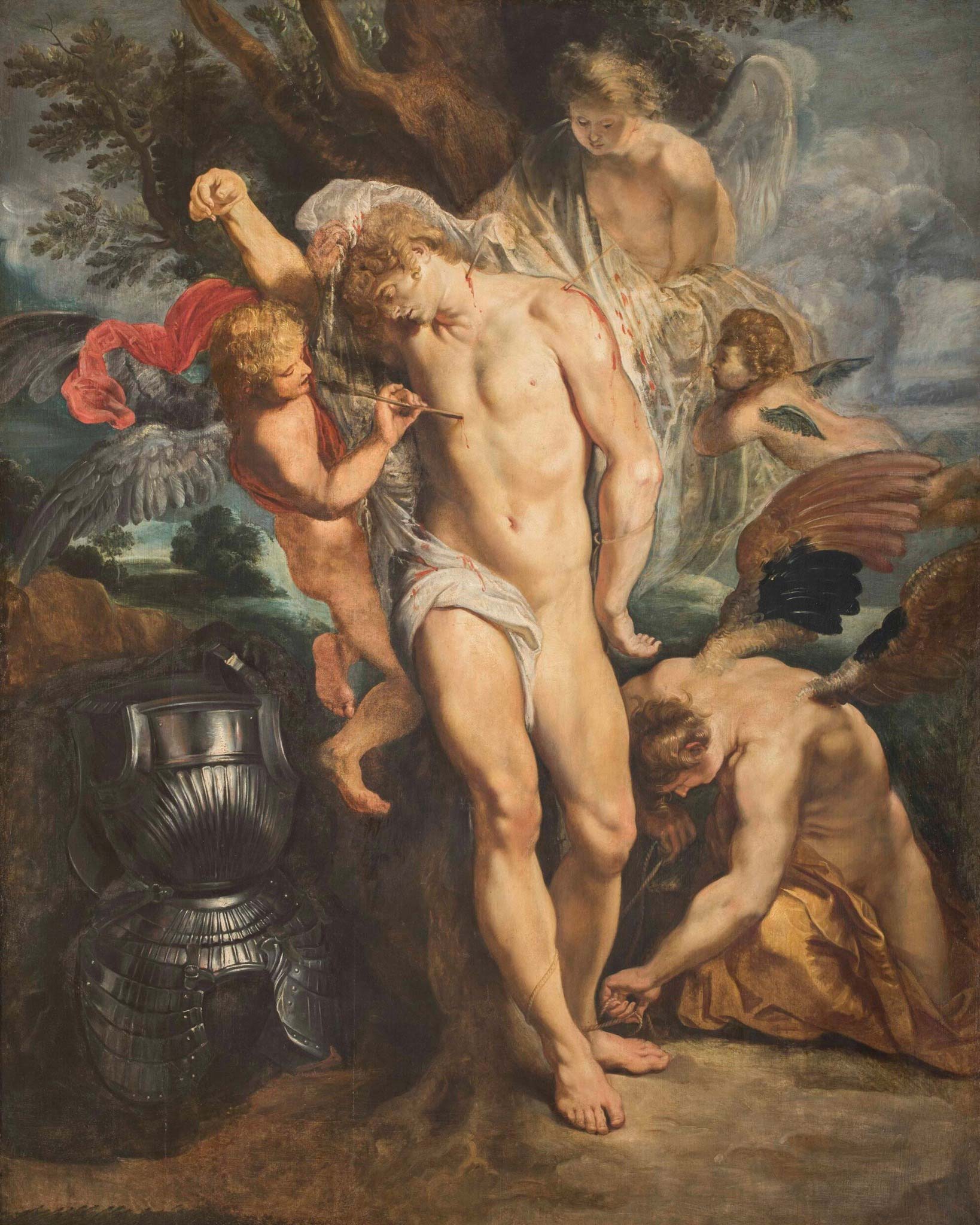
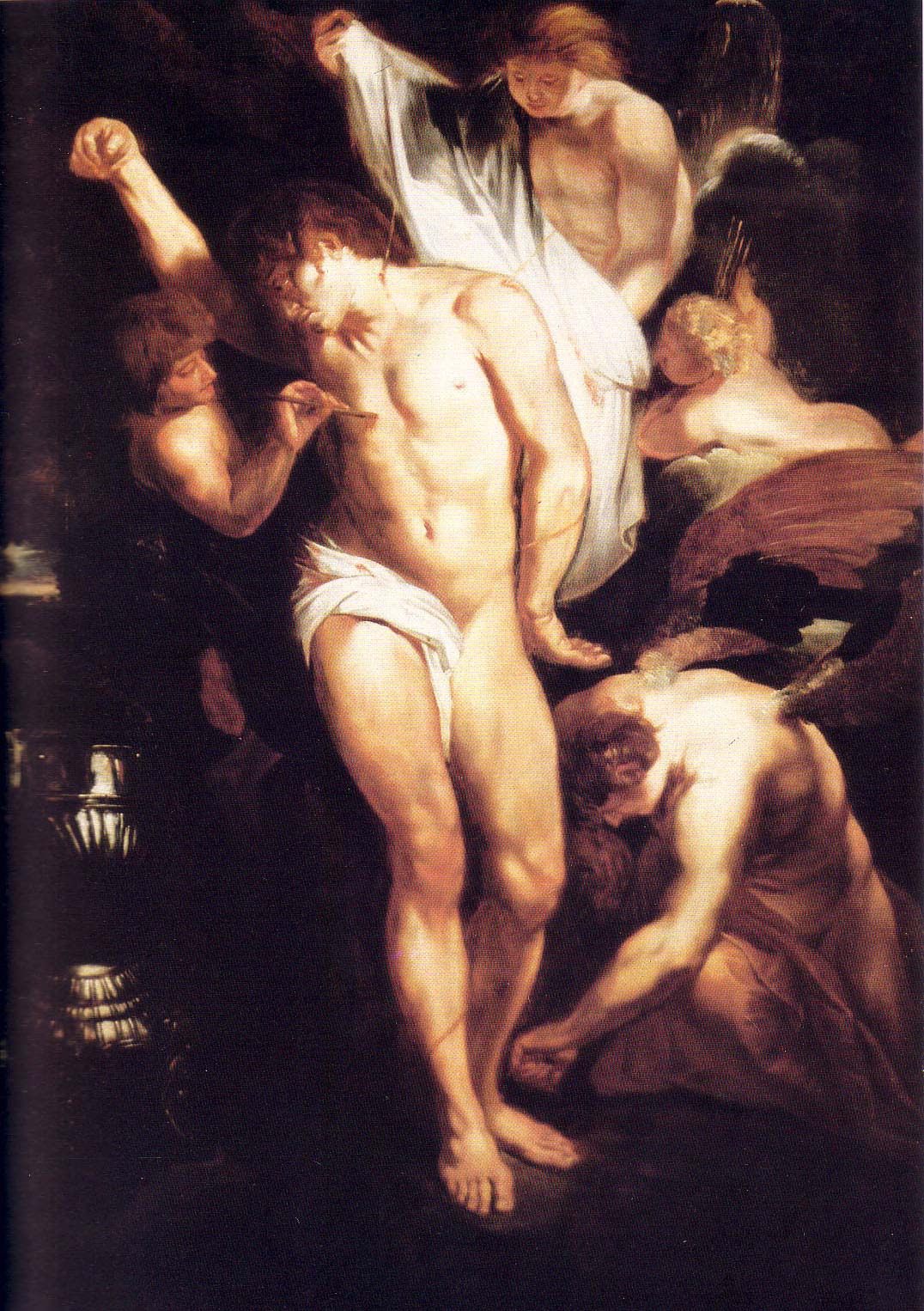
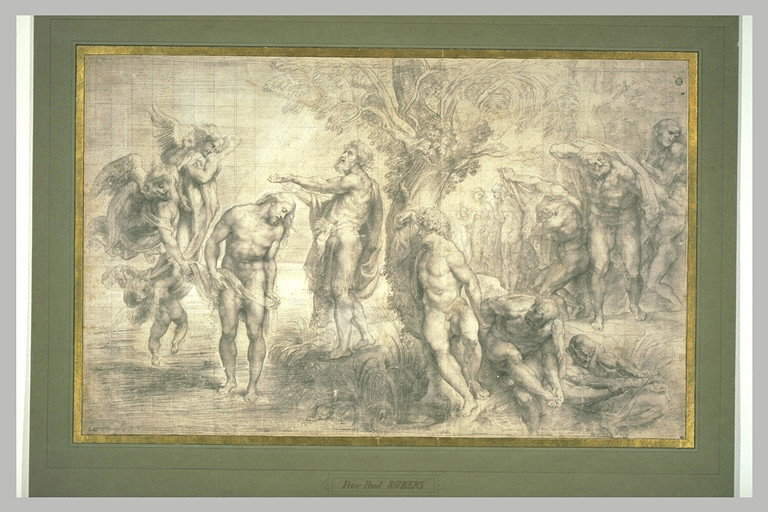
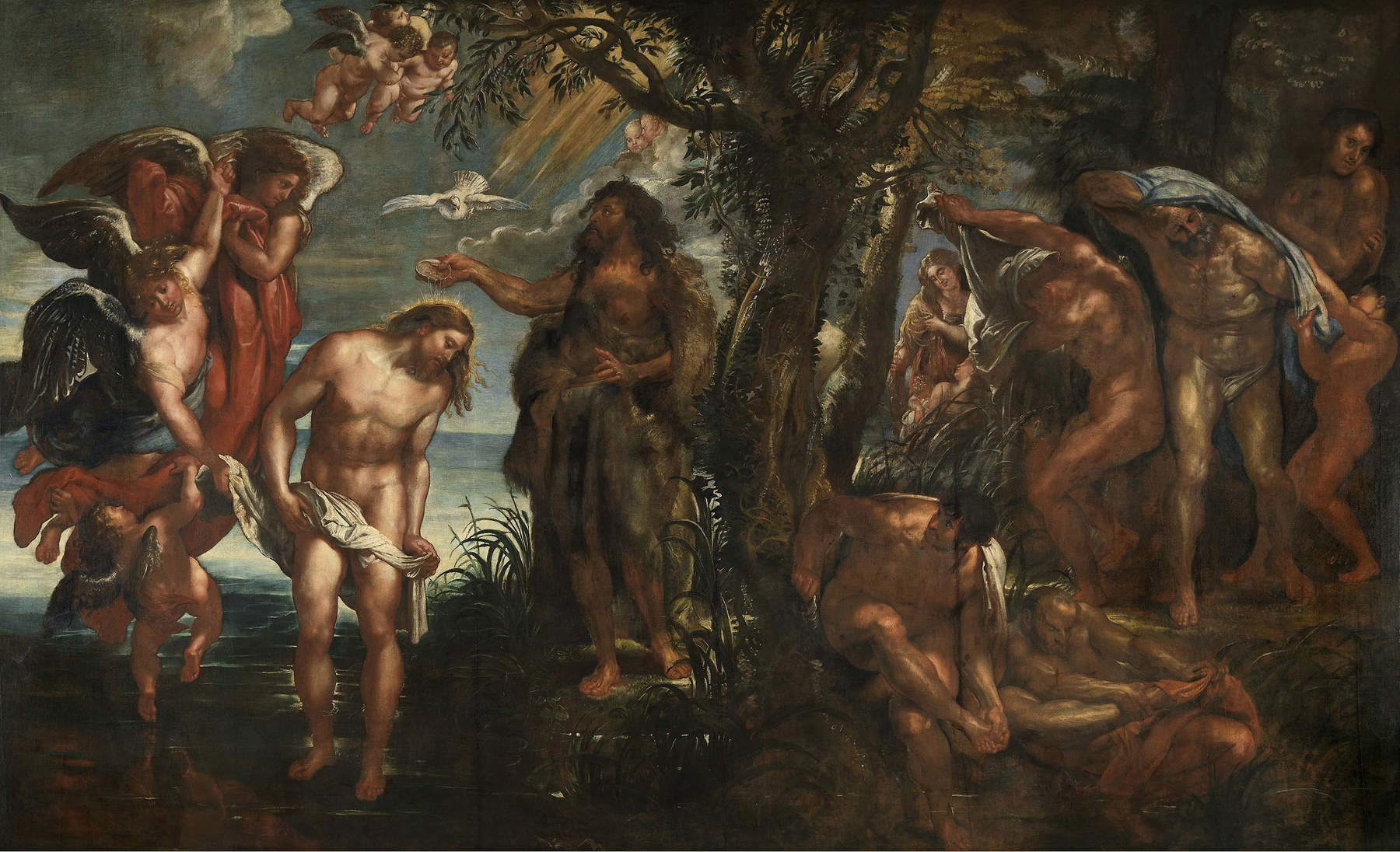
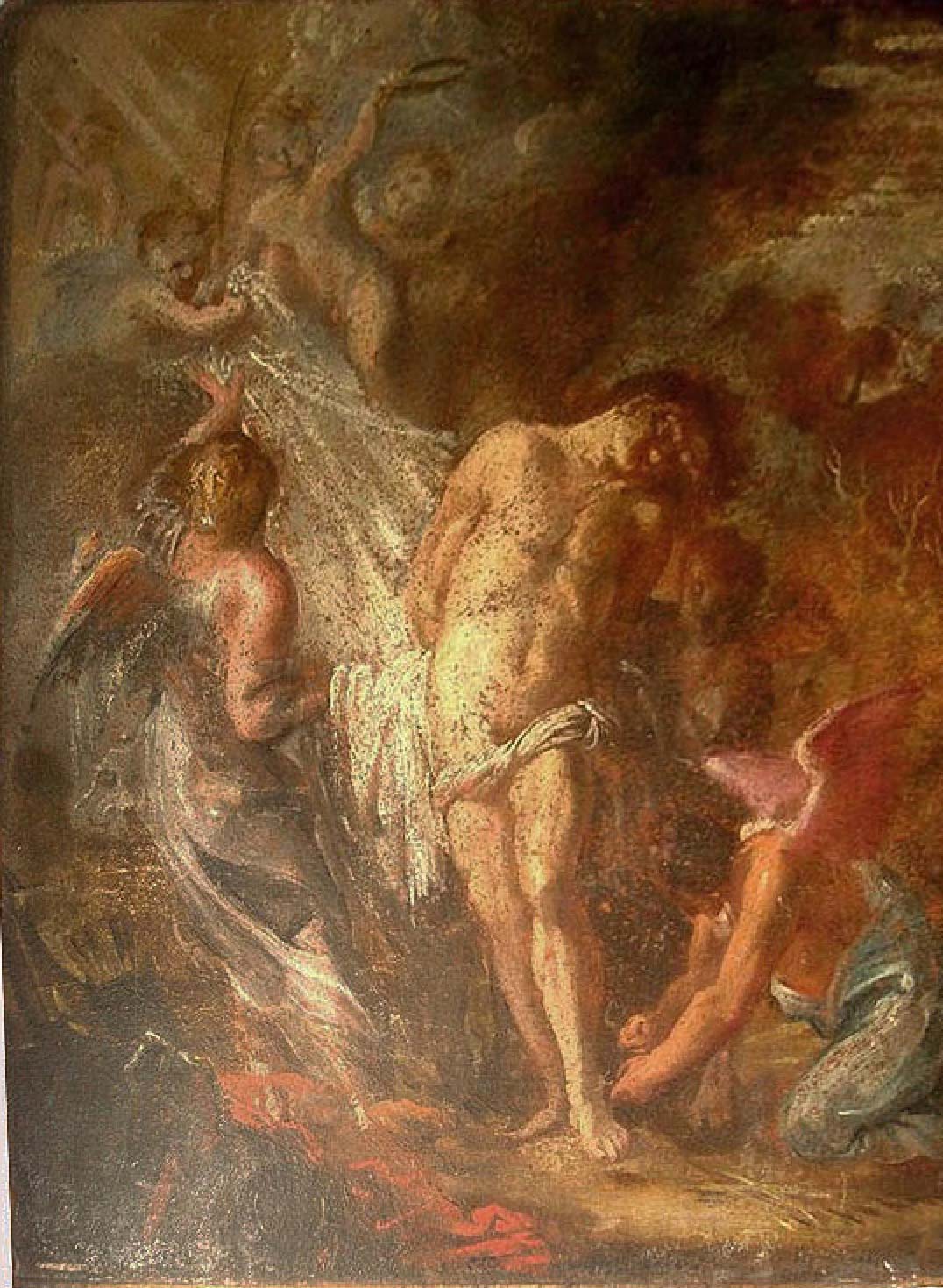
It should be noted, however, that the work seems to be characterized by stylistic traits and a less contrasting and dramatic relationship between light and shadow than in Rubens’ early Italian years, such precisely that Jaffè has led him to advance its dating to after the painter’s return to Antwerp.
There are also other elements today that point the execution of a similar work back toward Rubens’ time in Mantua. In fact, at first the painter had thought of using, again drawing on the same composition conceived for the Mantuan church, precisely the figure of Christ, as shown by a concise sketch (location unknown, formerly in Paris, Millon et Associés, 1/03/2013, no. 33, oil on paper pasted on panel, 23 x 18.5 cm, as École flamande debut du XVIII siècle), whose stylistic affinity to the still somewhat acerbic modes we already know of this early Italian time of his, such as the Martyrdom of St. Ursula, now in the Ducal Palace in Mantua, which came to us from the convent of S. Ursula, or the Fall of Phaethon from a London collection (M. Jaffé, Rubens andItaly, 1977, p. 78, figs. 234 - 235), appears evident. The rest of the composition also turns out in the sketch to have been thought of otherwise, with the exception of the figure of the kneeling angel on the right, which is essential in confirming the relationship with the final version that is the subject of this dissertation.
To shed new light on the matter, at least to restore the most convincing aspect of the original version, there is a further unpublished redaction of the work, belonging to an English private collection (oil on canvas, 115 x 92 cm), the dimensions of which are compatible with those reported in the Spinola document and in the identical ratio of height to width.
The work is characterized by a chromatic register and chiaroscuro intensity decidedly more appropriate to that characterizing Rubens’s operative moment in his early Italian time at the court of Vincenzo Gonzaga, when all his efforts were directed toward the study of great Italian painting.
Decidedly alternative to the version presented in the exhibition, which appears even more distant from the typical manners of Rubens’ early Italian years than the one belonging to the Corsini Gallery, characterized by a palette of muted tones tending toward a pearly-gray dominant, and by a’diligent execution that is more draughtsmanship than painting, flattened in the muted relationship between light and shadow, where no memory of the chromatic vigor and structural function of color of Venetian ancestry is discerned any longer.
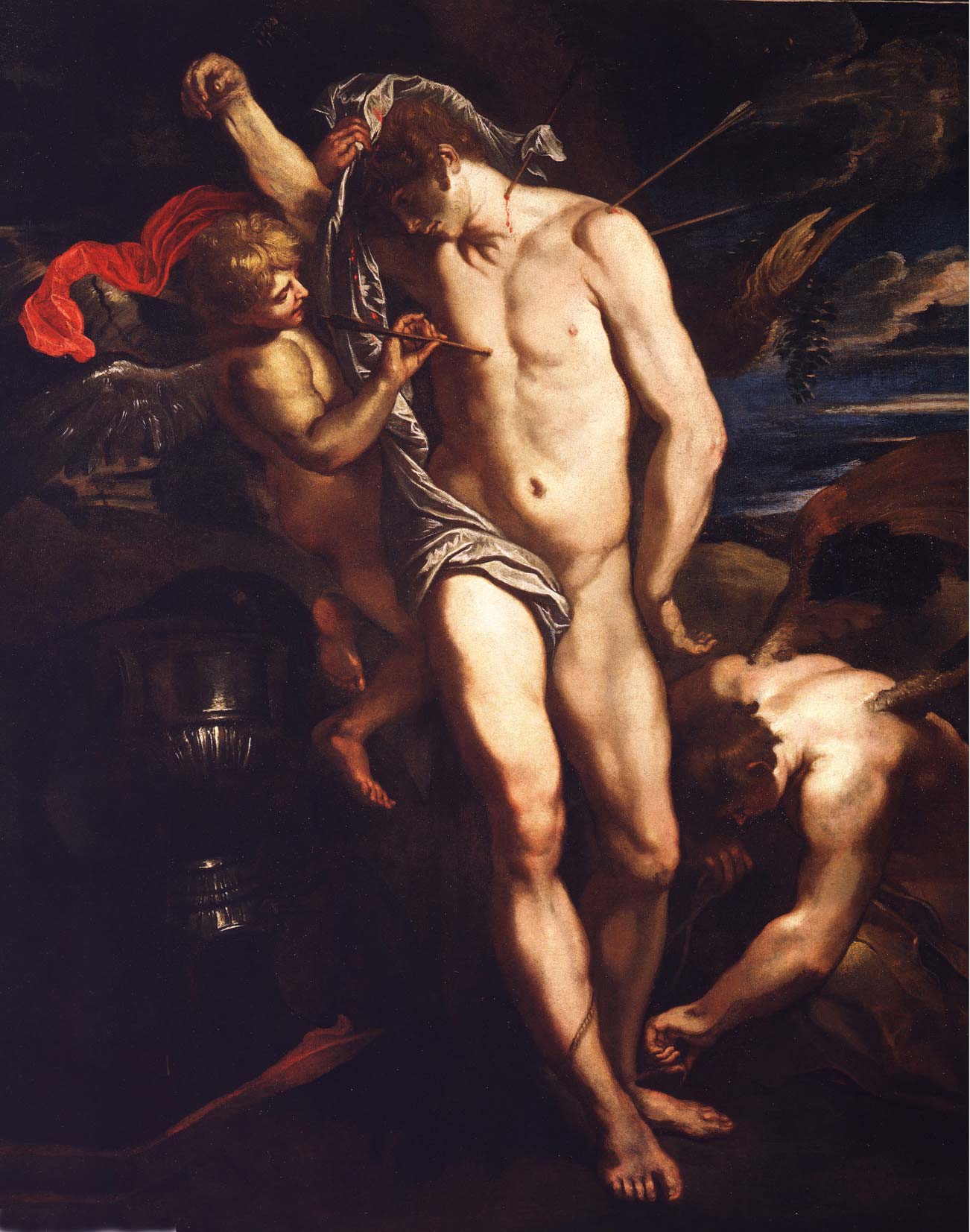
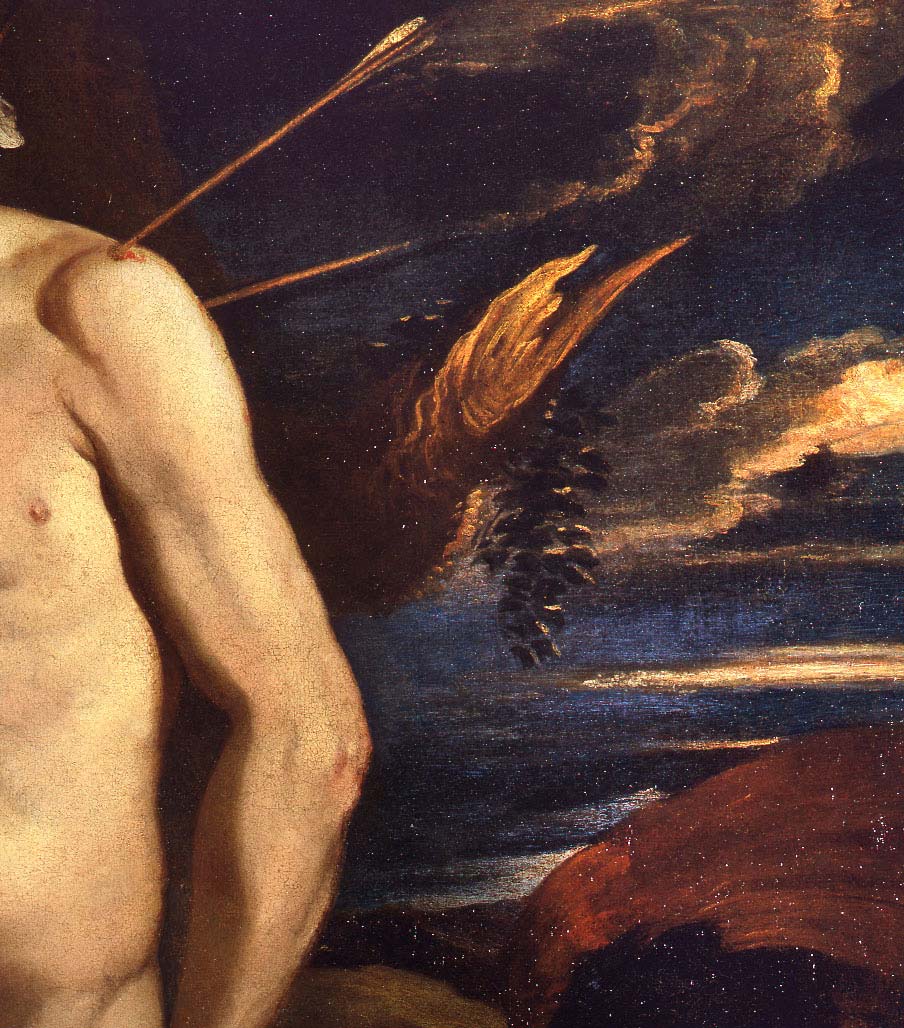 Detail of
Detail of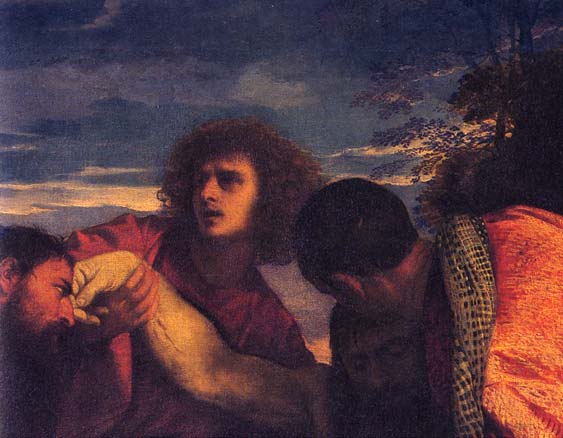 Detail of
Detail of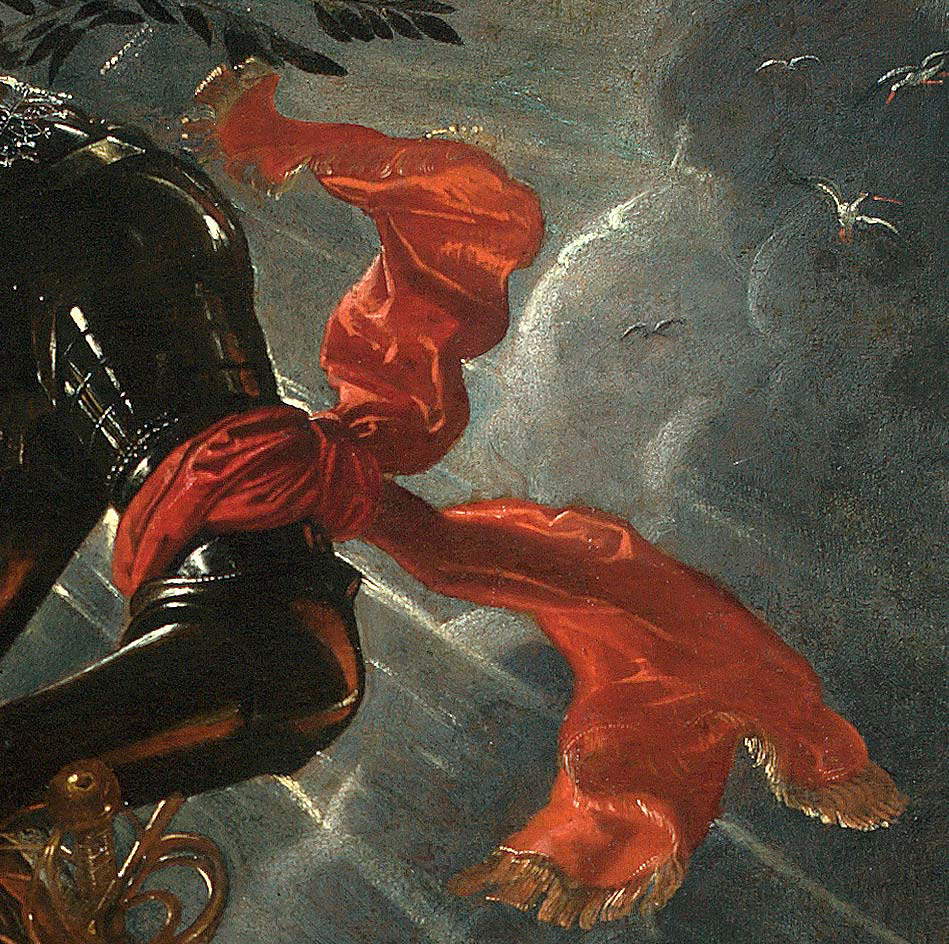 Detail
Detail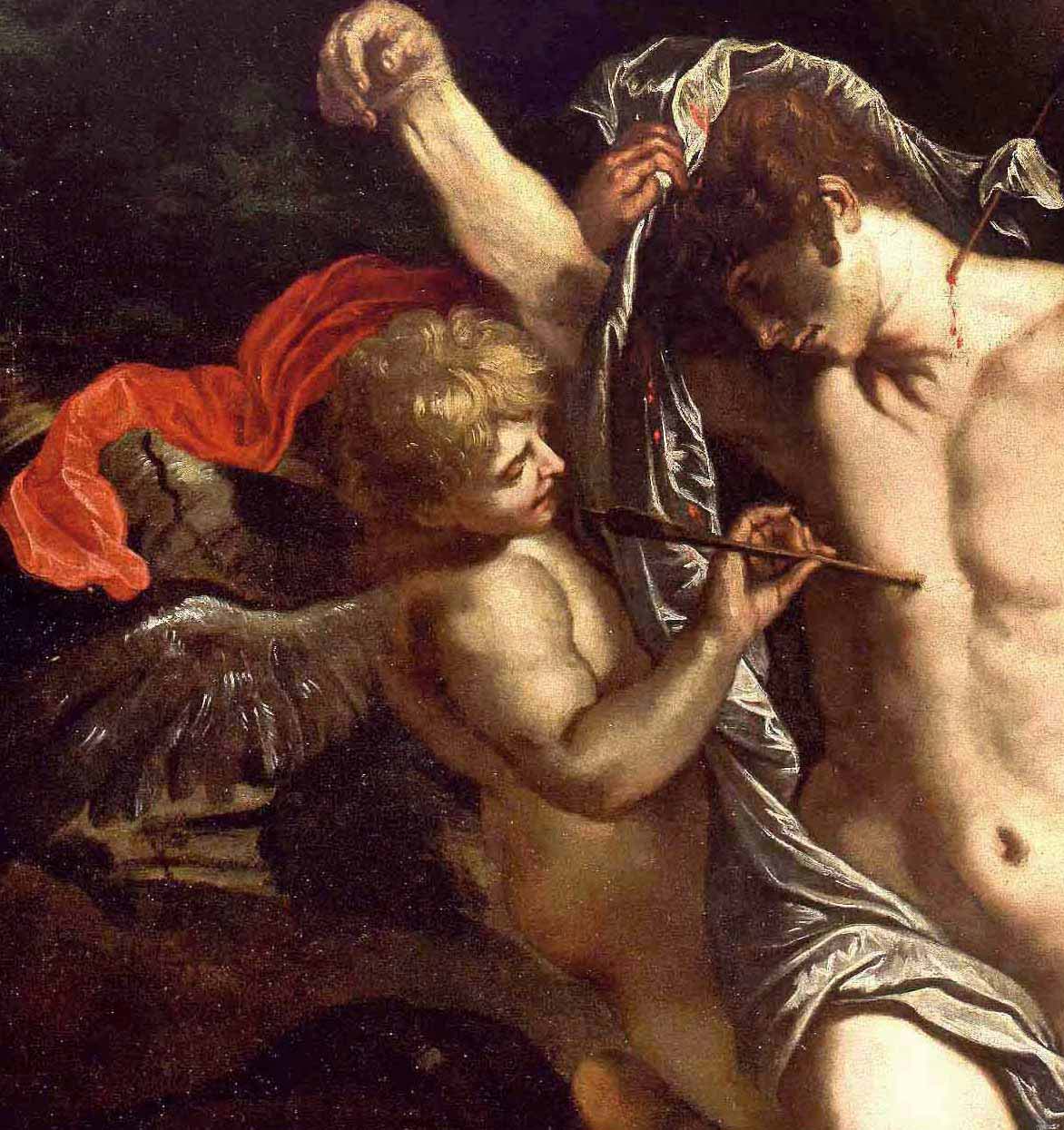
In this unpublished version of St. Sebastian being cared for by angels, that corner of deep blue sky, furrowed by luminous streaks and pinkish clouds, as in a typical sunset of lagoon painting, hardly found in the Flemish figurative tradition, but absolutely typical instead of much Venetian painting and repertoire especially in numerous works by Titian, Rubens’ most beloved painter in Italy, deserves special attention.
In relation to the painter’s particular moment, also exemplary is the essentiality with which he constructs by simplified and hasty highlights the folds of the cloths, almost renouncing altogether the progressive modeling of the sfumato. Ways that, in these years intensely devoted to the study of Venetian painting, echo above all those of Tintoretto, and which we find again in other coeval paintings, as in the portrait of Gio. Carlo Doria astride his steed, from Palazzo Spinola, where the red fluttering band attached to one arm of the knight highlights a stroke of execution entirely analogous to that of identical color depicted by him in the upper left corner of St. Sebastian . A stylistic analogy that also returns in the synthetic brushstrokes of the white drape descending on his right side, where only the color is different. Taking into account the much larger size, these are then the same essential features that characterize the large coeval canvases with the Gonzaga in adoration of the Trinity in the Ducal Palace in Mantua.
Warning: the translation into English of the original Italian article was created using automatic tools. We undertake to review all articles, but we do not guarantee the total absence of inaccuracies in the translation due to the program. You can find the original by clicking on the ITA button. If you find any mistake,please contact us.